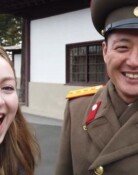Probe needed into cultural properties stolen by Japan
Probe needed into cultural properties stolen by Japan
Posted March. 05, 2015 07:21,
When a front page story in Tuesdays issue of the Dong-A Ilbo suggesting that nine relics from Seobongchong tomb, which had been excavated during Japans colonial rule of Korea, was carried by a portal site, hundreds of comments on the report were posted from the morning on the day. The comments indicated that netizens were deeply shocked to learn that Seobongchong golden crown, the only golden crown from the Shilla Kingdom that has "yangdae," or golden belts attached in a cross-shape inside the crown, was manually damaged during Japans colonial rule of Korea, and that major relics including a bead bracelet went missing. Some comments read that the Korean government should make efforts to bring back cultural properties that were illegally stolen by Japanese smugglers, including Hideo Moroga.
The ancient tombs from the Shilla Kingdom that were illegally excavated by the Japanese government general during Japans colonial rule of Korea reportedly number more than 1,000 in total, including small tombs. Akio Koizumi, who actually excavated Seobongchong, left a semi-official report issued in 1927 suggesting that he had excavated more than 50 ancient tombs during a six-month period. Considering the National Museum of Koreas claim that it takes at least a year to excavate Seobongchong alone, the way the Japanese colonialists did was closer to "looting" than "excavating." Hence, analysts say chances are high that relics from not only Seobongchong but also other ancient tombs from the Shilla Kingdom would have been damaged or illegally smuggled out.
People in the cultural community say far-reaching investigation into Japanese imperialists management of Korean cultural properties is required in the wake the re-excavation of ancient tombs from the Shilla Kingdom by the National Museum of Korea. Hundreds of thousands of pieces of relics are stored at the National Museum of Koreas storages, but they have not been completely identified yet due to lack of manpower, said Choi Eung-cheon, an art history professor at Dongguk University. Thorough inspection and investigation is needed regarding materials from the period of Japans colonial rule.
In order for Korea to bring back its cultural properties, such an investigation should be also conducted first. If Korea presents obvious data as evidence, the country concerned would not afford to unconditionally deny demand to return Korean cultural properties. Under the situation, Korea will be able to hold renegotiations over the "Ogura Collection" that includes relics from Geumgwanchong tomb that Moroga siphoned off. The Ogura collection was excluded from the subjects during negotiations for normalization of diplomatic ties between Korea and Japan in 1964 on the ground that the assets were owned by a private citizen. However, as Takenoske Oguras son donated the collection to the Tokyo National Museum in 1981, the collection came to be owned by the state. If Korea seeks to regain cultural properties stolen by foreign forces and preserve them in their invaluable original shapes, it should trace and investigate facts even from the past to the bottom.
sukim@donga.com







